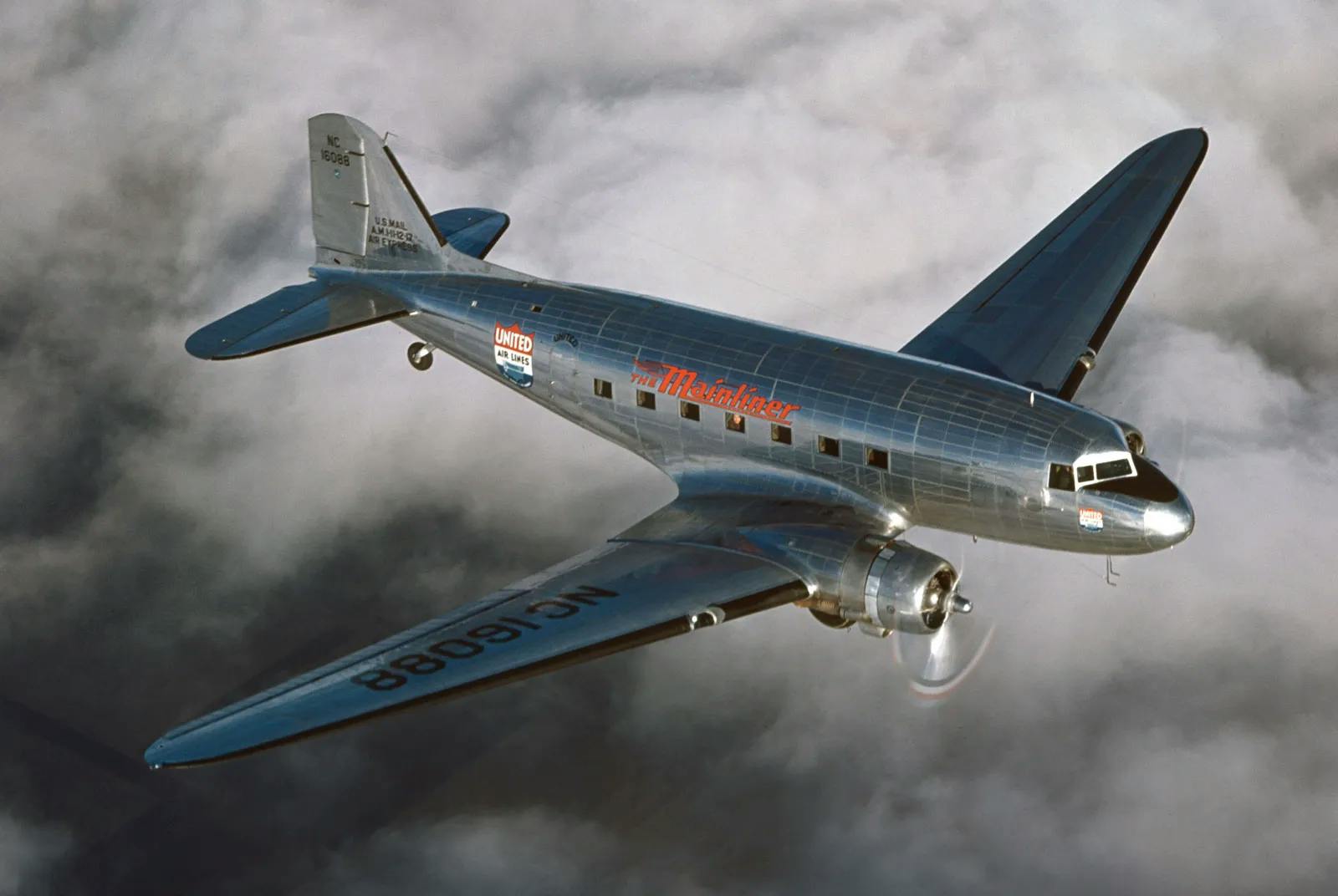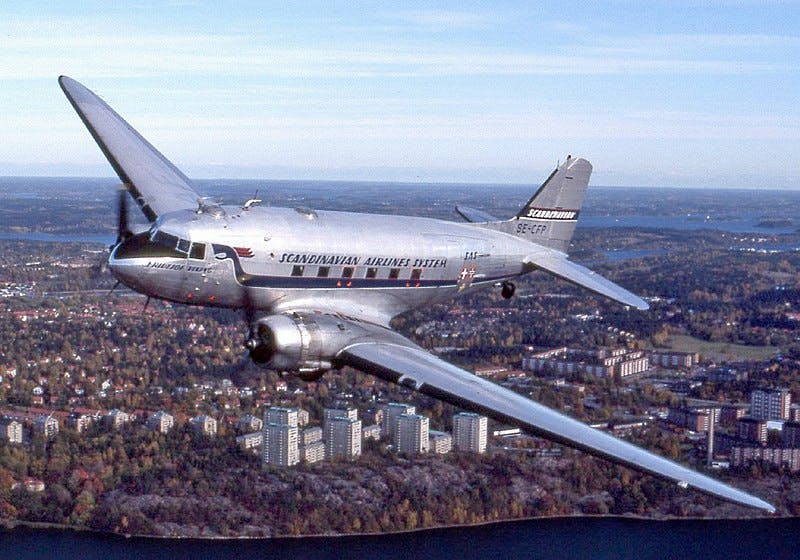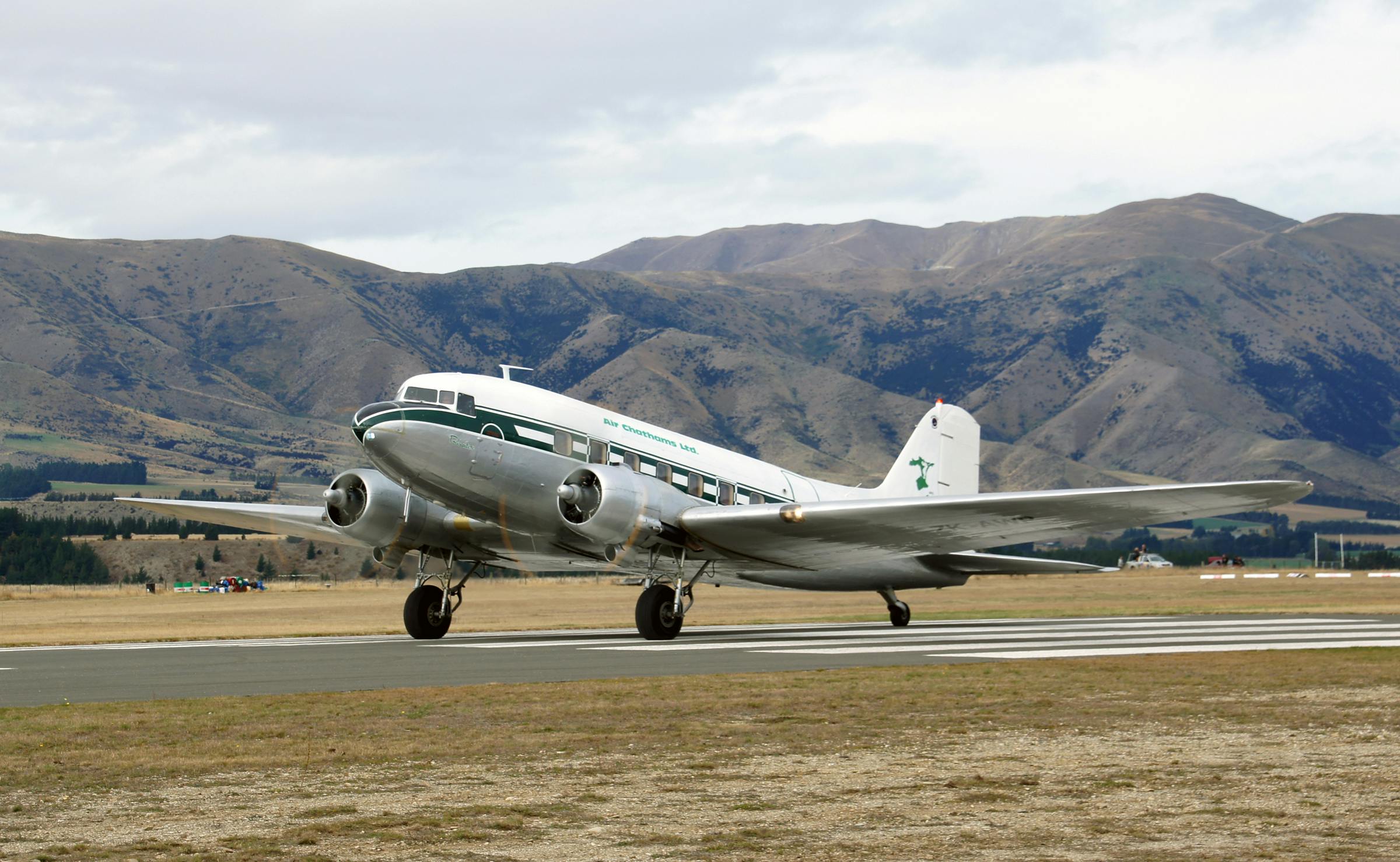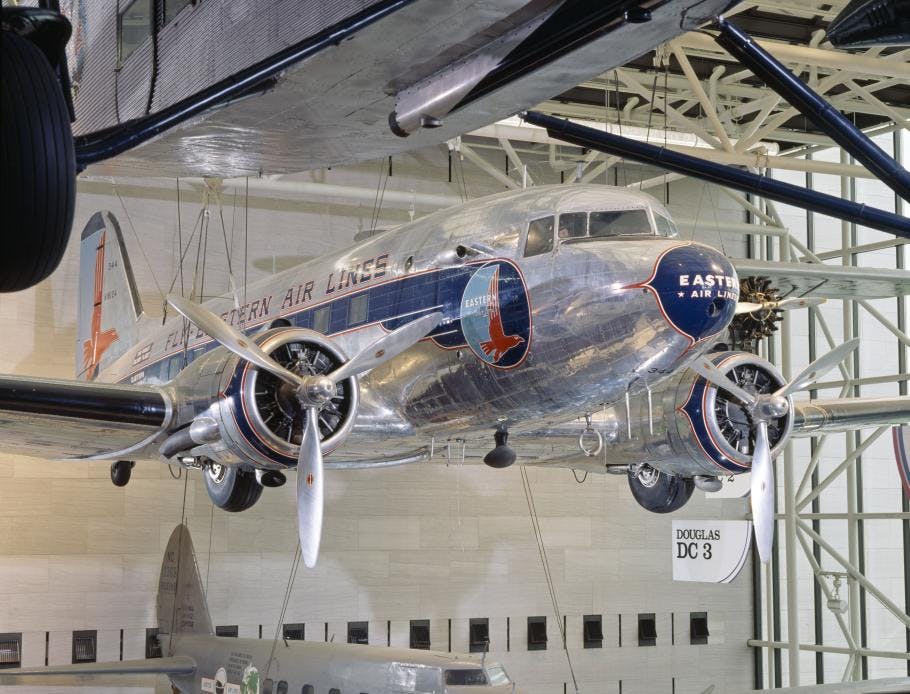2024-03-04
Douglas DC-3: still getting the job done 89 years later

When you talk about getting your money’s worth, there are a few items on Earth that stand out. Some 18th-century (or earlier) furniture is still in regular use in presidential/royal palaces and hoity-toity homes (an original Windsor straight chair sold for $2). If you’re well-heeled enough, you might wear a 1953 Rolex Submariner (original price: $150) on your wrist, and it likely still tells perfect time so you won’t be late for your Bridgehampton brunch with the Vanderbilts. In the aviation world, the US military is still flying its original fleet of 1950’s Cold-War-era B-52 bombers, the last aircraft of which left the production line in 1962. But it’s hard to think of another airplane with a longer active service life, that’s still in commercial use today, than the Douglas DC-3, which first flew in 1935.
The US Army Air Forces called it the Skytrain or informally the “gooney bird” (in its military C-47 form). Airline pilots referred to it simply as the Three, Old Methuselah, the Placid Plodder, the Dowager Duchess, Doug, or the Dizzy Three. Whatever you want to call it, let’s look at this remarkable airplane and what made it so good for so long.

History and development of the Douglas DC-3 (military designation: C-47)
1933’s Boeing 247 is considered the first “modern” airliner, replacing the Ford Trimotor’s nose-mounted central engine, high wing, and fixed landing gear with a low wing, twin wing-mounted engines, and retractable gear. However, it only held 10 passengers, and up to 400 pounds of mail. (Early airliners benefited from the Contract Air Mail Act of 1925, known as the Kelly Act, which helped establish a nationwide system supporting air travel and transport as an option to railroads.) The 1934 Douglas DC-2 was a contemporary competitor, and was much larger and a little faster, but held only 14 passengers and required at least 4 stops in a cross-country flight to refuel. However, it established a new standard in passenger comfort and interior space.
American Airlines CEO C.R. Smith convinced an initially reluctant Douglas Aircraft Company president Donald Douglas to design a “sleeper” aircraft based on the DC-2. The DC-2’s cabin allows a 6’2” person to stand fully upright in the center of the fuselage passenger compartment, but the interior width was considered too narrow for side-by-side berths for sleeping, at 66 inches (1.7 meters) wide. After Smith assured Douglas that American would purchase 20 of the new airliners, Douglas agreed to proceed with the design. The new DST (Douglas Sleeper Transport) featured an interior cabin 92 inches (2.3 meters) wide, and was developed in under 2 years by a Douglas team led by chief engineer Arthur Raymond. The first DST flew on December 17, 1935 (which incidentally was the the 32nd anniversary of the Wright Brothers’ historic flight at Kitty Hawk). It could be termed a prototype, but no major changes were made and it went directly into service with American Airlines, which is a testament to the parent DC-2’s solid design.
The DST could accommodate 14-16 sleeping berths, particularly useful during overnight/transcontinental journeys. However, Douglas and the airlines were wise enough to also see the benefit of the wider passenger compartment, and versions with 21, 24, and eventually up to 32 seats were built, and given the model designation DC-3 (Douglas Commercial 3). The DC-3 could fly across the United States with just 3 stops for fuel, in around 18 hours.
By today’s standards, that may sound like a drag, but in the ‘30s it was positively revolutionary. As Smithsonian Magazine reports, “In 1934, the year before the introduction of the DC-3, a flight from New York to Los Angeles was a grueling ordeal, typically requiring 25 hours, more than one airline, at least two changes of planes and as many as 15 stops or so. Now, a single plane could cross the country, usually stopping only three times to refuel.”
But the increased speed and convenience of the journey was only part of the allure. American Airlines and the DC-3 began transforming the image of air travel from a dangerous, noisy affair to a luxury pastime, where the flight experience itself was as worthy as the destination. Smithsonian continues, “passengers were offered cocktails, followed by entrée choices such as sirloin steak or Long Island duckling, served on Syracuse China with Reed & Barton silverware. At cruising altitude, the captain on occasion would have strolled the aisle and chatted with passengers, who were called ‘visitors’ or ‘guests’.... transcontinental sleeper flights featured curtained berths with goose-down comforters and feather mattresses. Breakfast choices might have been pancakes with blueberry syrup and julienne-of-ham omelettes.”
This luxury treatment came at a price, naturally. A round-trip coast-to-coast ticket at the time was pretty spendy, at around $300, or around $6,500 today. Still, businessmen flocked to the new airline to take advantage of the time saved. And, prices-per-mile did indeed start to come down as people began to embrace the new mode of travel. By 1940, more than two million Americans made trips by air annually, and cost per mile for the consumer had decreased from 5.7 cents in 1935 to .05 cents, according to Smithsonian. (If you crunch the numbers, those figures look suspiciously low to us, but who are we to argue with Smithsonian?)
However, though 607 commercial DC-3s were built, it was the military’s adoption of the platform in late 1941 that really cemented the airframe as an icon. More than 10,000 of the aircraft were built during WWII, under the designations C-47, C-53, R4D, and Dakota. The C-47 was instrumental in strategic and troop transport during the war, and earned a solid reputation for reliability, ease of flying, and durability. It could take off and land from unimproved dirt runways, had a low stall speed around 78 mph/125 kph, and a useful cruising speed (around 211 mph/339 kph). Its range with a maximum fuel load and a 3,500-pound/1,587-kg payload was an impressive 1,580 miles/2,540 km. It towed troop gliders, deployed paratroops, dropped supplies, and flew cargo and personnel everywhere. Its contribution to the war effort can hardly be overstated.
Including licensed copies built in Japan and Russia, over 16,000 DC-3s of all types were built (according to the Royal Aeronautical Society), the last leaving the factory in 1952.

How much did a DC-3 cost?
The base price of a new DC-3 in 1936 was around $60,000, though Delta says that by 1940-41 it paid $115,000 each for its first 5 DC-3s. Obviously, the popularity of the aircraft boosted its price, but the jet age eventually shunted the DC-3 aside as a main-fleet commercial airliner. By 1960 used examples were available for $75,000. Currently, flying examples can be purchased from between $400,000-$700,000.

How many DC-3s and/or C-47s are still flying?
Sources differ, but according to Smithsonian Magazine, at least 400 DC-3s are still in active commercial service today, mostly for cargo transportation. There are a few still flying passengers for tourist sightseeing/charter flights or “enthusiast” experiences. (For large skydiving group jumps, the DC-3/C-47 was a natural fit for a lot of years, for example.) Simple Flying’s estimation is a little more conservative: “According to information kindly shared by Michael Prophet and compiled by Coert Munk for the DC-3 Appreciation Society, there are an estimated 164 DC-3s across all variants flying regularly. This includes military variants (the C-47 and Dakota) as well as those in commercial operation.” There are at least 8 DC-3s undergoing active restoration as well, so the number of functional, flying DC-3s and C-47s may actually increase in the coming years.
As far as the oldest, still-flying DC-3? There’s a DST variant built in 1936 that’s still airworthy and flew within the last couple of years, and a DC-3 built in 1937 (43rd aircraft off the assembly line) that’s still flying airshows, operated by the Flagship Detroit Foundation. Pretty amazing. We’re certain that Douglas and Raymond would not have predicted that their iconic creation would still be delighting airplane fans and delivering cargo 89 years later, but it can’t be argued that the DC-3 has certainly earned its paycheck.
–By Jeff Davis, Intergalactic Scribe
Sources:
https://www.smithsonianmag.com/history/how-the-dc-3-revolutionized-air-travel-5444300/?no-ist
https://simpleflying.com/dc-3-operation/
https://www.thisdayinaviation.com/17-december-1935/
https://www.slashgear.com/1456039/douglas-dc-3-still-flying-after-almost-90-years/
https://en.wikipedia.org/wiki/Douglas_DC-3
https://www.aerosociety.com/news/the-immortal-dc-3/